- Home
- Directory
- Shop
- Underwater Cameras - Photographic Accessories
- Smartphone Housings
- Sea Scooters
- Hookah Dive Systems
- Underwater Metal Detectors
- Dive Gear
- Dive Accessories
- Diving DVD & Blu-Ray Discs
- Diving Books
- Underwater Drones
- Drones
- Subscriptions - Magazines
- Protective Cases
- Corrective Lenses
- Dive Wear
- Underwater Membership
- Assistive Technology - NDIS
- On Sale
- Underwater Gift Cards
- Underwater Art
- Power Stations
- Underwater Bargain Bin
- Brands
- 10bar
- AOI
- AquaTech
- AxisGo
- Backscatter Underwater Video and Photo
- BLU3
- Cayago
- Chasing
- Cinebags
- Digipower
- DJI
- Dyron
- Edge Smart Drive
- Eneloop
- Energizer
- Exotech Innovations
- Fantasea
- Fotocore
- Garmin
- Geneinno
- GoPro
- Hagul
- Hydro Sapiens
- Hydrotac
- Ikelite
- Indigo Industries
- Inon
- Insta360
- Intova
- Isotta Housings
- Jobe
- JOBY
- Kraken Sports
- LEFEET
- Mirage Dive
- Nautica Seascooters
- Nautilus Lifeline
- NautiSmart
- Nitecore
- Nokta Makro
- Oceanic
- Olympus
- OM System
- Orca Torch
- Paralenz
- PowerDive
- QYSEA
- Scubajet
- Scubalamp
- Sea & Sea
- SeaDoo Seascooter
- SeaLife
- Seavu
- Shark Shield
- Sherwood Scuba
- Spare Air
- StickTite
- Sublue
- Suunto
- SwellPro
- T-HOUSING
- Tusa
- U.N Photographics
- Venture Heat
- XTAR
- Yamaha Seascooter
- Youcan Robot
On-board Odyssea I in North Sulawesi
Contributed by Wandy Hochgrebe
Photos by Tim and Wandy Hochgrebe
 Friends
and colleagues envied us for going diving in North Sulawesi, but let me tell
you: 11 days with Bob Whorton on a boat is hard work. Especially when he convinces
you that visiting a karaoke bar in the midst of the city of Bitung, Sulawesi
is a great idea.
Friends
and colleagues envied us for going diving in North Sulawesi, but let me tell
you: 11 days with Bob Whorton on a boat is hard work. Especially when he convinces
you that visiting a karaoke bar in the midst of the city of Bitung, Sulawesi
is a great idea.
And if you think Mandarin Fish dance promiscuously, you haven't seen the bunch
that joined us on this adventure!
We were lucky enough to be aboard the brand new 'MV Odyssea I' from Odyssea
Divers and join her and her crew on her second trip ever. This 30 meter long
live-aboard was finished in 2006, built by local tradesman with Malaysian
owners. Although the 'Odyssea I' can take a maximum of 24 guests we were on-board
with only 14 keen divers and at least the same number of staff.
 Our
itinerary included Bangka Island in the North and then further on to Lembeh
Strait, often referred to as 'The Muck-diving Capital of the World', and back.
We would be immersing ourselves in serious macro diving for 11 days straight.
Our
itinerary included Bangka Island in the North and then further on to Lembeh
Strait, often referred to as 'The Muck-diving Capital of the World', and back.
We would be immersing ourselves in serious macro diving for 11 days straight.
Upon arrival at Wori Bay, were Odyssea Divers is based, we spoke briefly to
people just returning from the maiden voyage of 'Odyssea I'. They had done some
great diving and saw a whole heap of cool critters, but the weather had been
pretty average with lots of rain combined with firm and cool winds. As it turned
out, luck was on our side and besides the occasional brief shower we had sunshine
and calm waters every day.
 The
first thing we thought when we came on-board the 'Odyssea I' was: SPACE.
The
first thing we thought when we came on-board the 'Odyssea I' was: SPACE.
The dive deck has plenty of room for divers and their gear. Additionally there has been a generous space reserved for underwater image makers with two large tables, all fitted with holding straps so you can leave your housings out while the boat is travelling and shelves underneath to store those extra bits like o-rings, lube, different ports, lenses and what not. Large rinse tubs are set-up at the back.
'Odyssea I' is definitely well set-up for underwater image makers, which was great since our group of 14 only had two people who did not take a camera diving.
 The
spacious saloon area can easily accommodate divers fiddling with their cameras
or their laptop computers, reading or having a snooze and this is where all
food is being served. Free soft drinks, juices, coffee and tea are available
at any time. The kitchen staff put treats out in between the buffet style meals,
so basically you are able to continuously eat in between dives, which suited
me just fine.
The
spacious saloon area can easily accommodate divers fiddling with their cameras
or their laptop computers, reading or having a snooze and this is where all
food is being served. Free soft drinks, juices, coffee and tea are available
at any time. The kitchen staff put treats out in between the buffet style meals,
so basically you are able to continuously eat in between dives, which suited
me just fine.
 Upstairs,
adjacent to the enormous sundeck, is the digital studio and the lounge. The
digital room is a great space to work on your images on your own computer or
the communal one. It is also possible to arrange e-mail access from here.
Upstairs,
adjacent to the enormous sundeck, is the digital studio and the lounge. The
digital room is a great space to work on your images on your own computer or
the communal one. It is also possible to arrange e-mail access from here.
I haven't even mentioned the cabins yet! Again they are nicely decorated and
large, especially when you consider that you are on a ship. A double bed or
two single beds side-by-side (no bunks!), a desk and wardrobe with a safe easily
fit in the room. The ensuites have a generous shower, a washbasin and toilet.
Our room was serviced every day and there is a laundry service too.
 The
breakfasts, served after the first dive, were very hearty and had fried or scrambled
eggs with something like bacon, sausages, potato wedges and French Toast. There
was always fresh fruit and we all agreed that there is nothing better than sun-ripened
pineapple and the very sweet little bananas...yum. One morning we had the option
of a more local breakfast, which I really enjoyed. Lunches were yummy too with
different pasta dishes, salad and fresh fruit.
The
breakfasts, served after the first dive, were very hearty and had fried or scrambled
eggs with something like bacon, sausages, potato wedges and French Toast. There
was always fresh fruit and we all agreed that there is nothing better than sun-ripened
pineapple and the very sweet little bananas...yum. One morning we had the option
of a more local breakfast, which I really enjoyed. Lunches were yummy too with
different pasta dishes, salad and fresh fruit.
 The
dinners were a good mix between local and the more western style food. We had
curries and stir-fries with beef, pork, fish, mixed seafood or chicken served
with rice or noodles and plenty of vegetables. The menu was varied, very tasty
and plenty of it. The only thing that would run out was dessert. And that was
because they were divine and a lot of people had seconds or even thirds!
The
dinners were a good mix between local and the more western style food. We had
curries and stir-fries with beef, pork, fish, mixed seafood or chicken served
with rice or noodles and plenty of vegetables. The menu was varied, very tasty
and plenty of it. The only thing that would run out was dessert. And that was
because they were divine and a lot of people had seconds or even thirds!
As promised on their website, 'Odyssea I' definitely offers onboard luxury and comfort.
 The
first morning on board we were split into smaller groups and each group was
introduced to their dive guide. Since a lot of the marine life is of small stature
it is a great idea to stay near the guides, as they know most of the time where
the critters hang out.
The
first morning on board we were split into smaller groups and each group was
introduced to their dive guide. Since a lot of the marine life is of small stature
it is a great idea to stay near the guides, as they know most of the time where
the critters hang out.
A challenge was trying to work out who was in your diving group though as nicknames
were changing on a daily (sometimes hourly) basis ... some variations more rude
than others.
 Each
day we were able to do up to four dives: two before lunch, one mid-afternoon
and a night dive. The surface intervals were decent ones: up to two and a half
hours. This meant you could fiddle with your camera, have lunch, take a nap
and laze around on the sundeck upstairs before deciding that you were not going
to miss the next dive. Very relaxing indeed.
Each
day we were able to do up to four dives: two before lunch, one mid-afternoon
and a night dive. The surface intervals were decent ones: up to two and a half
hours. This meant you could fiddle with your camera, have lunch, take a nap
and laze around on the sundeck upstairs before deciding that you were not going
to miss the next dive. Very relaxing indeed.
Coming back from a dive the super friendly staff was waiting for you at the
dive deck, eager to assist you from the tender back on board. They would take
care of your camera gear, dive gear and as soon as you took off your wetsuit
it too was looked after.

 We
did a day's diving on our way to Bangka Island. At 'Popoh' it started with a
school of Shrimpfish (Centricus scutatus) hanging upside down near
a red sea fan (Ctenocella sp.) trying to blend in, brightly coloured
nudibranchs, plenty of commensal shrimps, the tiniest frogfish and a pretty
aggressive anemonefish swimming off with some of my skin in its mouth! Our guide
pointed out a dark brown and a black Wasp Cockatoo Waspfish (Ablabys taenianotus).
We
did a day's diving on our way to Bangka Island. At 'Popoh' it started with a
school of Shrimpfish (Centricus scutatus) hanging upside down near
a red sea fan (Ctenocella sp.) trying to blend in, brightly coloured
nudibranchs, plenty of commensal shrimps, the tiniest frogfish and a pretty
aggressive anemonefish swimming off with some of my skin in its mouth! Our guide
pointed out a dark brown and a black Wasp Cockatoo Waspfish (Ablabys taenianotus).
The afternoon dive was at 'Garden Eel Point', which surprisingly had some Garden Eels sticking out of the sand at just over 20 meters. Not enough time to enjoy those ones for too long as there was a whole lot more to see including a new species of Pygmy Seahorse, yet to be described. These seahorses are black and besides the fact that they are tiny they are also flat and flop about more than the Hippocampus bargibanti, adding another dimension to getting a picture in focus.
On our first dive at Bangka Island at a dive site called 'Batu Gosoh', we saw the awesome Xenocrab (Xenocarcinus tuberculatus). Their exoskeleton is smooth and shiny, their long knobbly legs hold on tightly to the whip coral they live on. This was followed by a black Ribbon Eel, Urang-utan Crab and several species of nudibranchs. We noticed a lot of beautiful soft corals, including some colourful Tree Corals (Dendronephthya sp.).
 Around
the corner were other fantastic dive sites with more soft corals, Leafy Scorpionfish
(Taenianotus triacanthus) and plenty of Pygmy Seahorses. At 'Tanjung
Ussy' later in the day we had some great cuttlefish action with three large
cuttlefish. The large black Frogfish our guide pointed out (I swam right past
it!!) did not seem to mind at all that we had a closer look and took plenty
of photos.
Around
the corner were other fantastic dive sites with more soft corals, Leafy Scorpionfish
(Taenianotus triacanthus) and plenty of Pygmy Seahorses. At 'Tanjung
Ussy' later in the day we had some great cuttlefish action with three large
cuttlefish. The large black Frogfish our guide pointed out (I swam right past
it!!) did not seem to mind at all that we had a closer look and took plenty
of photos.
We had the opportunity to do a night dive here as well and it was fantastic.
This spot comes highly recommended for a night dive with an amazing variety
of crustaceans all over the place, large seahares, brittlestars, sleeping parrotfish
and some juvenile Crocodilefish. My buddy on this dive even managed to photograph
a swimming Frogfish - now that is a skill!

 Early
the next morning we arrived at Lembeh Strait where we spent 6 days. Lembeh Strait
is located between the North-Sulawesi mainland and Lembeh Island. There are
just over 20 dives sites in the strait itself. For some reason I thought it
would be very remote and isolated, but there actually is a large international
harbour at Bitung. Unfortunately, many mysterious shapes floating past during
our safety stops generally turned out to be two-minute noodle wrapping or discarded
footwear. Despite this Lembeh Strait is still a mecca for diving, appreciating
nature's diversity and underwater photography/videography. It is certainly a
place to encounter a collection of the weird, the rare and the amazing and I
am not talking about my fellow travellers.
Early
the next morning we arrived at Lembeh Strait where we spent 6 days. Lembeh Strait
is located between the North-Sulawesi mainland and Lembeh Island. There are
just over 20 dives sites in the strait itself. For some reason I thought it
would be very remote and isolated, but there actually is a large international
harbour at Bitung. Unfortunately, many mysterious shapes floating past during
our safety stops generally turned out to be two-minute noodle wrapping or discarded
footwear. Despite this Lembeh Strait is still a mecca for diving, appreciating
nature's diversity and underwater photography/videography. It is certainly a
place to encounter a collection of the weird, the rare and the amazing and I
am not talking about my fellow travellers.
 A
lot of the dive sites in Lembeh Strait are sandy slopes with only patches of
sessile growth. These patches offer a fascinating concentration of marine life.
Some of the sites have small coral reefs, but you will not find extensive coral
gardens or endless walls. The exciting things we came across kept surprising
us all and with a water temperature of 28° C (82° F) there was no excuse
to not do each and every single dive on offer. Unless, of course, the night
dive clashed with Happy Hour, but that was taken care of after the first two
days.
A
lot of the dive sites in Lembeh Strait are sandy slopes with only patches of
sessile growth. These patches offer a fascinating concentration of marine life.
Some of the sites have small coral reefs, but you will not find extensive coral
gardens or endless walls. The exciting things we came across kept surprising
us all and with a water temperature of 28° C (82° F) there was no excuse
to not do each and every single dive on offer. Unless, of course, the night
dive clashed with Happy Hour, but that was taken care of after the first two
days.
A big advantage of the sandy areas is that life can try to blend in with their surrounds, but they cannot really hide and once the guides spot them it is relatively easy to take a decent photo. For a beginning photographer, such as myself, it is great that most creatures were just sitting still and even better I could not possibly damage corals in my efforts of getting the right angle. The downside was of course that you had to make sure not to disturb the sediment when attempting to take a shot or when you were leaving else you could really ruin the shot for yourself, the person waiting behind you to have a go or worse cover any growth in the vicinity under a layer of muck.
 The
Seamoths, Dragonets and Flying Gurnards prefer the sandy areas. The very cute
looking Seamoths (Eurypegasus draconis) scurry along the seabottom
and look more like a wind-up-toy than a fish. Of course the amazing Wonderpuss
(Octopus sp.)
The
Seamoths, Dragonets and Flying Gurnards prefer the sandy areas. The very cute
looking Seamoths (Eurypegasus draconis) scurry along the seabottom
and look more like a wind-up-toy than a fish. Of course the amazing Wonderpuss
(Octopus sp.)  does
hide in the sand too and most of the time only its eyes poke out of the sand
(unless one of the guides is particularly keen to show you the whole animal
- ahem).
does
hide in the sand too and most of the time only its eyes poke out of the sand
(unless one of the guides is particularly keen to show you the whole animal
- ahem).
On one of the dive sites called 'Teluk Kembahu' our guide showed us the elusive Rhinopias, or Weedy Scorpionfish (Rhinopias frondosa). The poor creature had to endure a lot since it was the only one of its kind in the area and each and every diver wanted to look at it or take a photo. Of course 'Odyssea I' was not the only boat in the vicinity either. At the time we were there the poor thing also had to deal with three fish lice.
 There
were dive sites with some coral growth or walls: Nudi Falls, Nudi Retreat, Makawidey
Point and Angel's Window to name a few.
There
were dive sites with some coral growth or walls: Nudi Falls, Nudi Retreat, Makawidey
Point and Angel's Window to name a few.  Here
we saw Frogfish, three different species of Pygmy Seahorses, including two yet
undescribed species and both the pink and yellow colour variation of Hippocampus
bargibanti. There were different species of anemonefish, trumpetfish, whip
corals with Xenocrabs and little crabs hiding amongst the soft coral tree polyps,
butterflyfish, angelfish, plenty of purring damsels, Red-tooth Triggerfish,
giant clams (small specimens only), squatlobsters, brightly coloured anthias,
all kinds of funky nudibranchs, my personal favourite the Urang-utan Crab and
more.
Here
we saw Frogfish, three different species of Pygmy Seahorses, including two yet
undescribed species and both the pink and yellow colour variation of Hippocampus
bargibanti. There were different species of anemonefish, trumpetfish, whip
corals with Xenocrabs and little crabs hiding amongst the soft coral tree polyps,
butterflyfish, angelfish, plenty of purring damsels, Red-tooth Triggerfish,
giant clams (small specimens only), squatlobsters, brightly coloured anthias,
all kinds of funky nudibranchs, my personal favourite the Urang-utan Crab and
more.

 One
of the least attractive dive sites when observed from the surface must be the
Police Pier. Basically, you are diving underneath moored fishing boats. This
did make things a bit dark underneath. Fish heads and a plastic bag with decomposing
fish were part of the scenery. More interestingly, I thought, were the high
number of brightly coloured nudibranchs (several different Nembrotha
and Tambja sp. and a tiny Chromodoris fidelis), different
species of pipefish, a large blue Ribbon Eel and, as I discovered, more fire
corals. Here I saw a high number of the endemic Banggi Cardinalfish (Pterapogon
kauderni). These beautiful little fish seem to breed like mad and are even
competing with anemonefish for anemones to live, as these cardinalfish do not
seem to be affected by the stinging cells of the anemone either.
One
of the least attractive dive sites when observed from the surface must be the
Police Pier. Basically, you are diving underneath moored fishing boats. This
did make things a bit dark underneath. Fish heads and a plastic bag with decomposing
fish were part of the scenery. More interestingly, I thought, were the high
number of brightly coloured nudibranchs (several different Nembrotha
and Tambja sp. and a tiny Chromodoris fidelis), different
species of pipefish, a large blue Ribbon Eel and, as I discovered, more fire
corals. Here I saw a high number of the endemic Banggi Cardinalfish (Pterapogon
kauderni). These beautiful little fish seem to breed like mad and are even
competing with anemonefish for anemones to live, as these cardinalfish do not
seem to be affected by the stinging cells of the anemone either.
 There
are a few wrecks in Lembeh Strait and we dived both the 'Mawali' wreck and the
'Kapal indah' wreck. Both are overgrown with lots of whip corals, soft corals,
barrel and finger sponges and ascidians, which all attract plenty of life. On
top of the 'Kapal indah' there was a ball of Striped Catfish (Plotosus lineatus),
whirling and twirling in a corner.
There
are a few wrecks in Lembeh Strait and we dived both the 'Mawali' wreck and the
'Kapal indah' wreck. Both are overgrown with lots of whip corals, soft corals,
barrel and finger sponges and ascidians, which all attract plenty of life. On
top of the 'Kapal indah' there was a ball of Striped Catfish (Plotosus lineatus),
whirling and twirling in a corner.
The 'Kapal indah' has the advantage that there is a little coral reef in the shallows where we could do our safety stop. Here we saw Barramundi Cod, Harlequin Sweetlips, damsels making a racket, anemonefish, featherstars ( determined to literally become attached to some people) and amazing sponges.
During the first night dive at Lembeh Strait the people who did go saw a Flamboyant Cuttlefish (Metasepia pfefferi) and I was a bit annoyed I had decided not to go. Although I did not get to see a single of these amazing cephalopods during this trip, I enjoyed each and every night dive I did end up doing.
The one at 'Nudi Falls' stands out in particular as absolutely amazing. Large crabs carrying sponges or several anemones scuttled past and quickly hid from my torchlight. I was not able to show my buddy what I was pointing at as its camouflage worked wonders. Plenty of corals and anemones had their polyps or feeding tentacles out and coloured large parts of the wall. I also got to see a juvenile Shaded Batfish (Platax pinnatus): pitch-black with a fluorescent-orange rim. Apparently they are seen here regularly, but I was stoked regardless!
 One
dive we definitely did not want to miss was the Mandarin Fish dusk dive. Small
groups of divers would set off just before sunset to an area where the Mandarin
Fish (Synchiropus splendidus) are known to perform their daily mating
ritual. Because the Mandarin Fish are particularly shy and do not like any light
when starting their dance no one is allowed to switch on their torches until
these brightly coloured fish get completely carried away and out of control.
The dive guide would cover his torch either with a red filter or have his hand
in front of the light to briefly take a peek to see what is happening. Our group
waited for 36 minutes and nothing happened other than one colourful male coming
out to have a quick check and quickly ducking down again. Another group nearby
reckoned they saw around 20 different couples coming out of the Staghorn Corals
'to play'. I guess we just have to take their word for it :-)
One
dive we definitely did not want to miss was the Mandarin Fish dusk dive. Small
groups of divers would set off just before sunset to an area where the Mandarin
Fish (Synchiropus splendidus) are known to perform their daily mating
ritual. Because the Mandarin Fish are particularly shy and do not like any light
when starting their dance no one is allowed to switch on their torches until
these brightly coloured fish get completely carried away and out of control.
The dive guide would cover his torch either with a red filter or have his hand
in front of the light to briefly take a peek to see what is happening. Our group
waited for 36 minutes and nothing happened other than one colourful male coming
out to have a quick check and quickly ducking down again. Another group nearby
reckoned they saw around 20 different couples coming out of the Staghorn Corals
'to play'. I guess we just have to take their word for it :-)
I was a little disappointed, but this is of course part of nature...all was
good again as soon as we got our hot towellettes upon surfacing. Once we got
back to 'Odyssea I' Jackie brought out hot, hot Choccocinos. He is an asset
to the company!
After our Mandarin Fish dive we had an outing planned, which is normally not
on the itinerary of the 'Odyssea I' and understandably so. Bob Whorton took
anybody who wanted to join in to Bitung to experience a local karaoke bar. Belinda,
this one is for you. "Massachusets"
sung by Bob has changed my psyche forever!
This is now our most favourite song of all times although my eye does twitch when we hear it. Can you see me standing in aisle 5 at our local supermarket singing along: "la-la-laaaa Massa-f***ing-chussets!!!"? Was it a surprise there were no other customers in the bar?
 We
had a wonderful time aboard the 'Odyssea I' and ended up with some great footage
and pictures to document our experience.
We
had a wonderful time aboard the 'Odyssea I' and ended up with some great footage
and pictures to document our experience.
All staff was amazingly helpful, friendly and accommodating. So helpful that you have to keep in mind that some guides do anything for you to get that shot of the seahorse, crinoid crab, wonderpuss or most wonderful magic fish you might never see again in your life. Although it is in the own interest of operators to educate and train their staff properly about protecting their assets, initiative has to come from visitors as well. We hope that, because Lembeh Strait is such and amazing diving destination, the locals will take care of this area environmentally, so it can be enjoyed for generations to come.
NEWSFLASH - July 2008:
 MV Odyssea 1 was badly damaged in a very bad storm on Sunday evening May 11, 2008. As such, all cruises chartered or booked are cancelled - a rebuild of this liveboard is currently not planned.
MV Odyssea 1 was badly damaged in a very bad storm on Sunday evening May 11, 2008. As such, all cruises chartered or booked are cancelled - a rebuild of this liveboard is currently not planned.
For more photos of this trip check here.
Shopfront
-
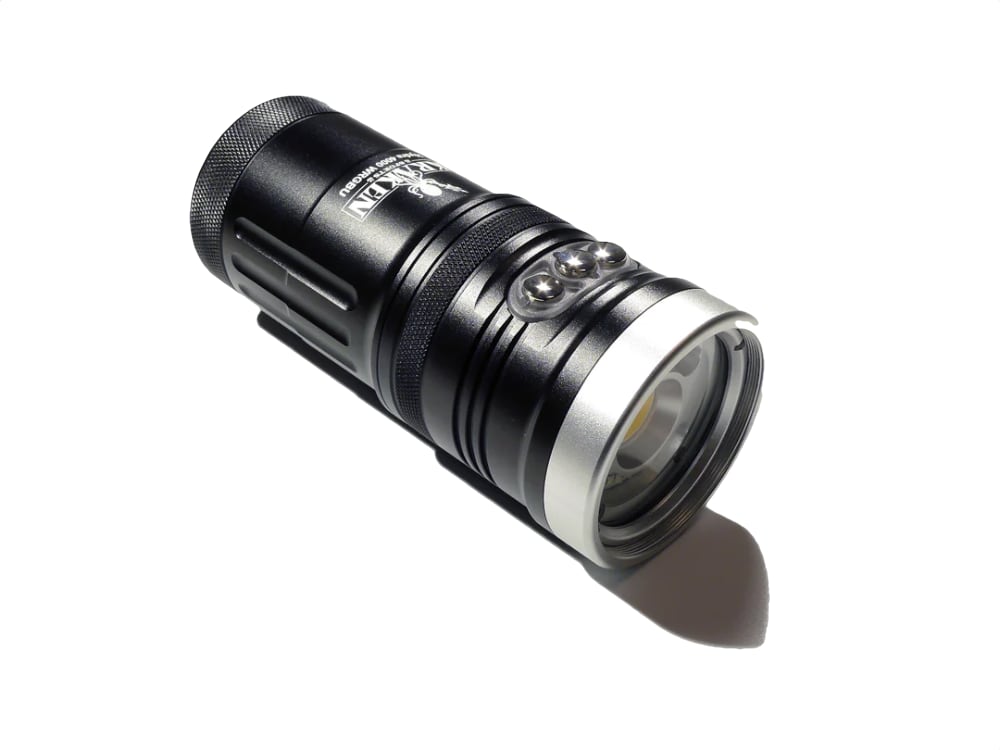 Kraken Hydra 4000 WRGBU
Kraken Hydra 4000 WRGBU
- Price A$ 739.00
-
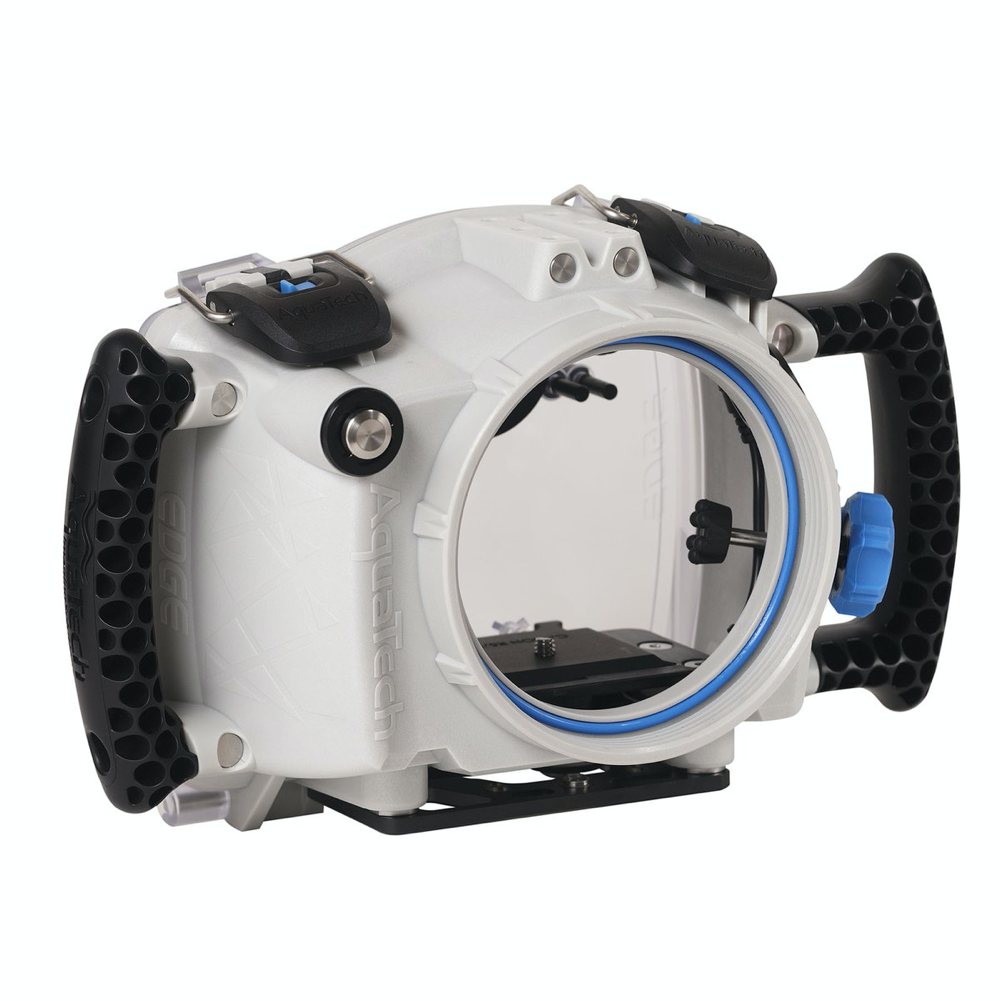 AquaTech EDGE Pro Camera Water Housings - Canon EOS mirrorless
AquaTech EDGE Pro Camera Water Housings - Canon EOS mirrorless
- Price A$ 2,149.00
-
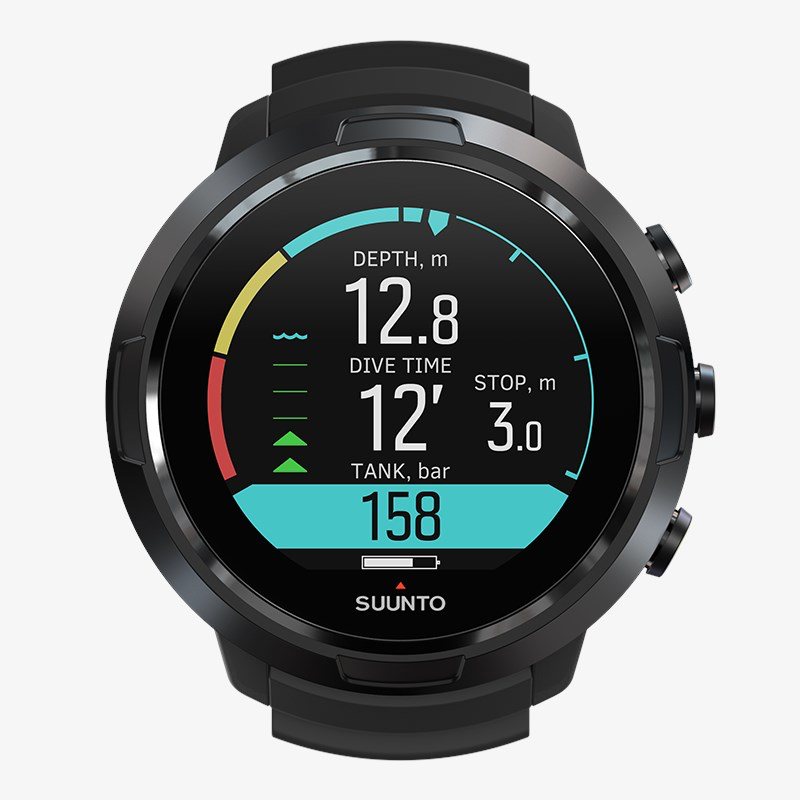 Suunto D5 Dive Computer with USB Cable
Suunto D5 Dive Computer with USB Cable
- Price A$ 749.00
-
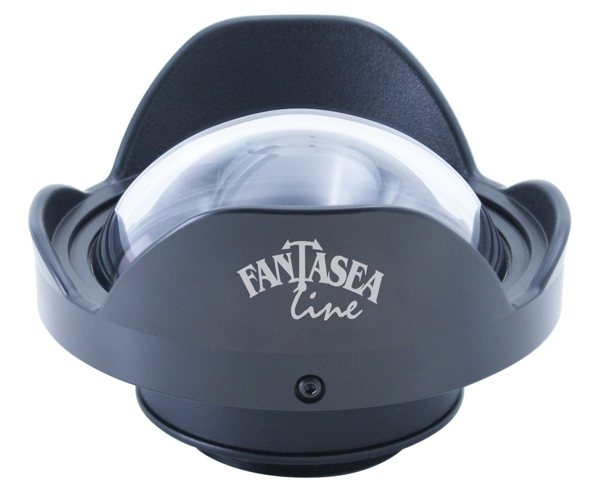 Fantasea UWL-400Q - Wide Angle Conversion Wet Lens 0.5x
Fantasea UWL-400Q - Wide Angle Conversion Wet Lens 0.5x
- Price A$ 599.00
-
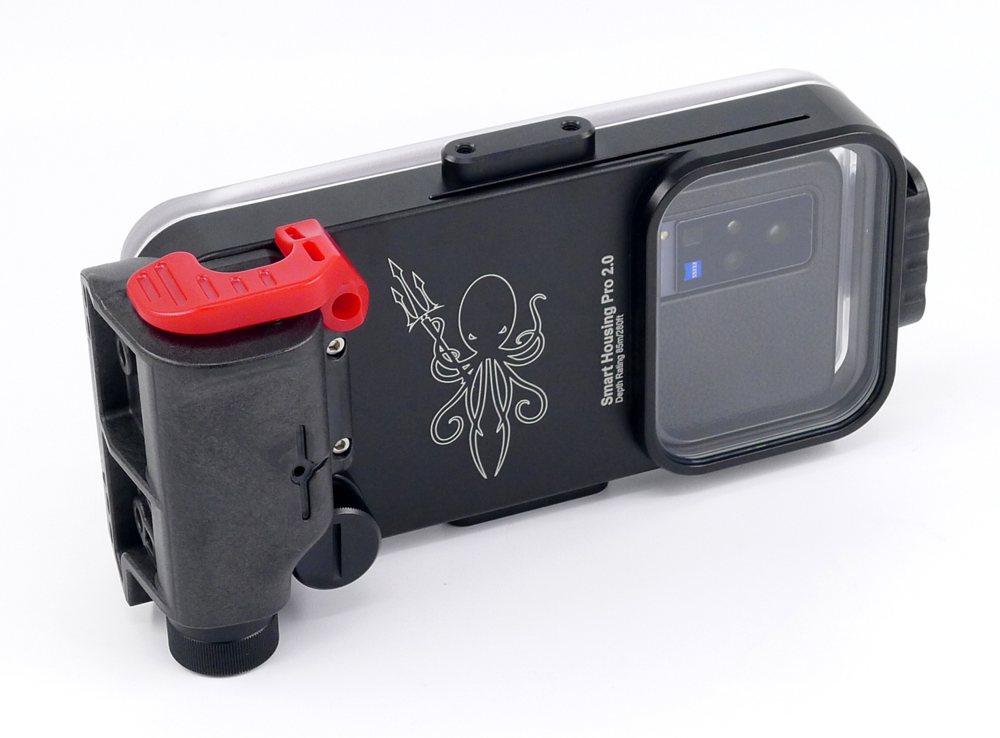 Kraken Sports - Universal Smart Phone Housing 2.0 Pro KRH07
Kraken Sports - Universal Smart Phone Housing 2.0 Pro KRH07
- Price A$ 799.00
In the Directory

 Wakatobi Dive Resort
Wakatobi Dive Resort
Wakatobi Dive Resort has some of the most pristine reefs in Indonesia at its doorstep. Protected by their Collaborative Reef Conservation Program, Wakatobi is the #1 choice for sophisticated divers.
 Pelagian Dive Yacht
Pelagian Dive Yacht
Feel like you're on a private yacht charter with just ten guests. Pelagian cruises the outer reaches of the exquisite Wakatobi region.




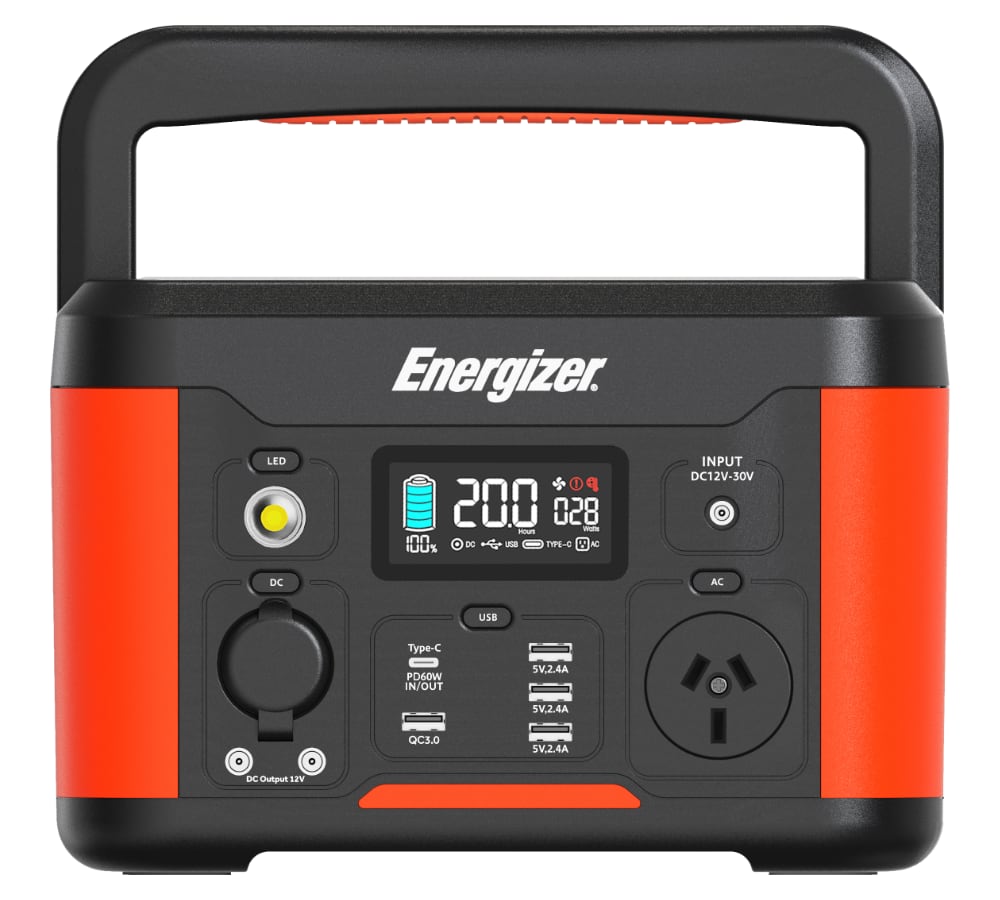
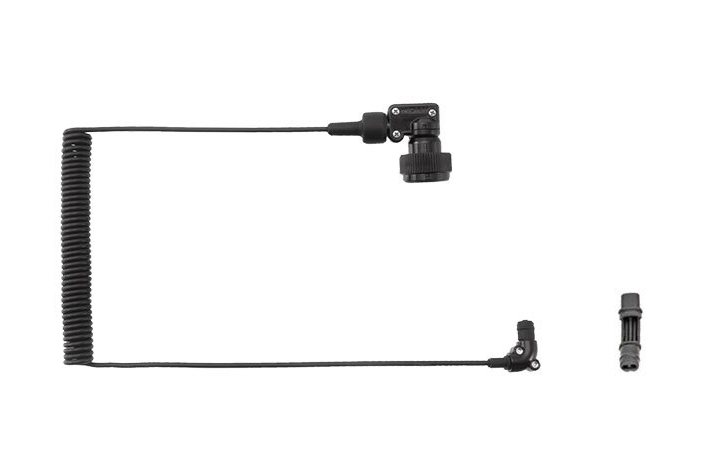
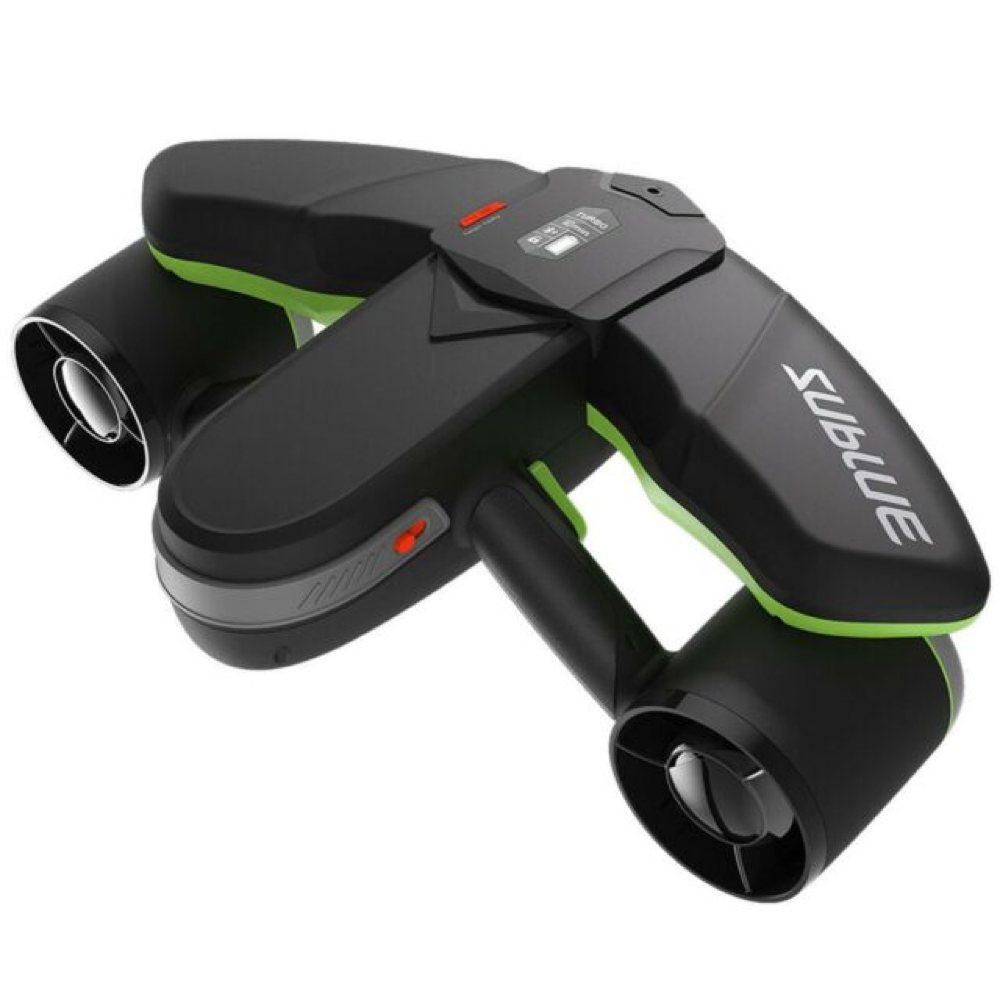
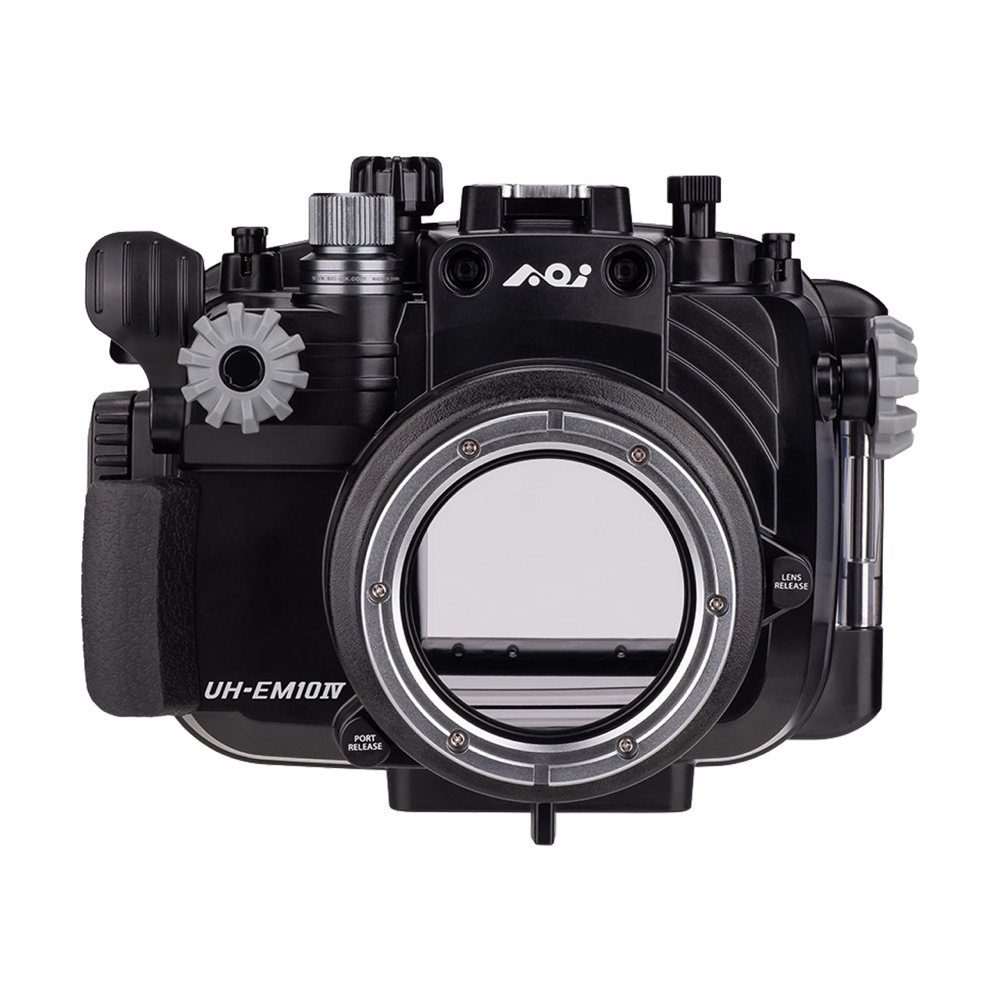
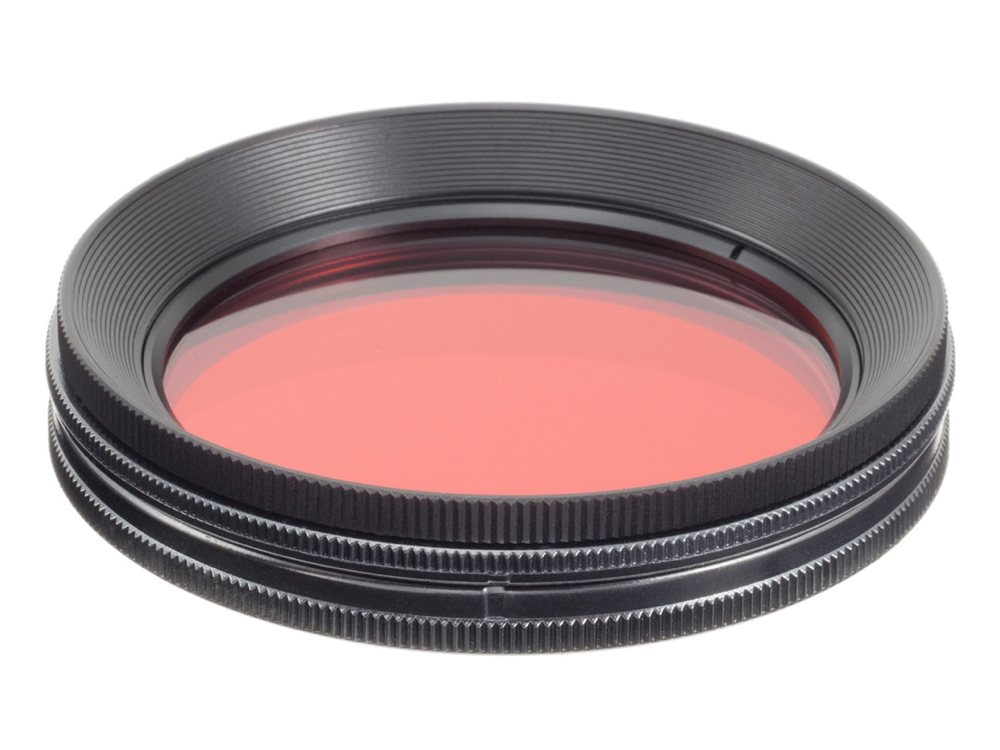

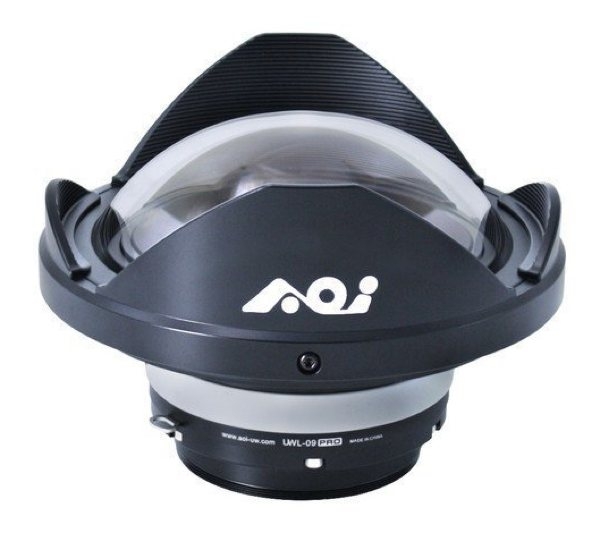



 Dual Beam Video Light Package with tray and arms - 4000 lumens - Scubalamp PV21 x 2
Dual Beam Video Light Package with tray and arms - 4000 lumens - Scubalamp PV21 x 2 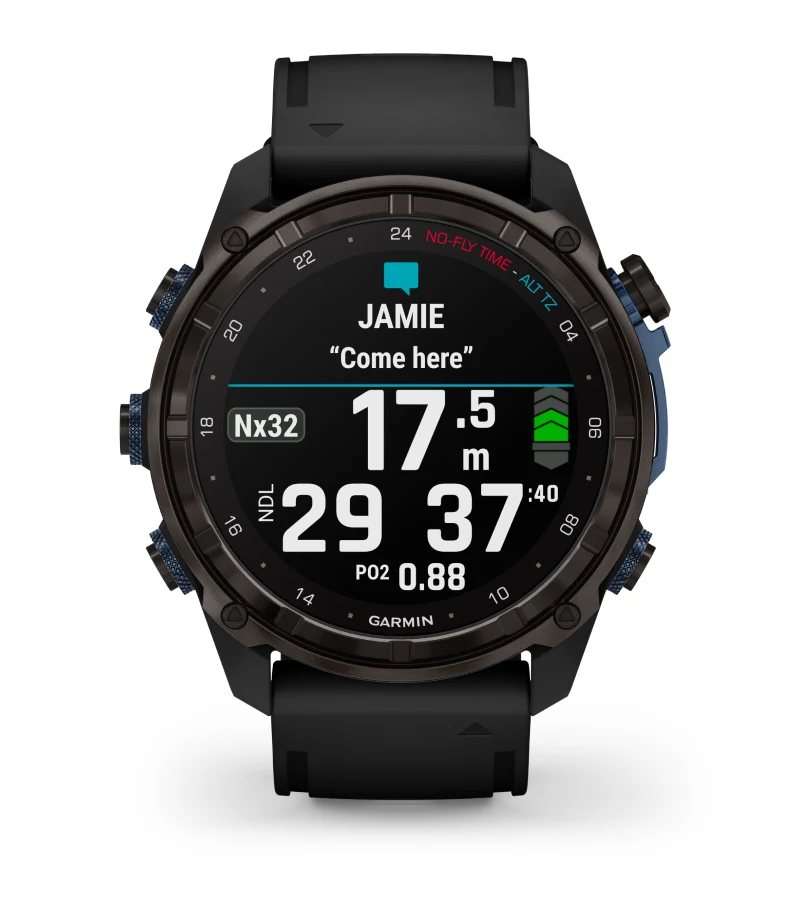 Garmin Descent Mk3i Watch Dive Computer - 51 mm, Carbon grey DLC titanium
Garmin Descent Mk3i Watch Dive Computer - 51 mm, Carbon grey DLC titanium 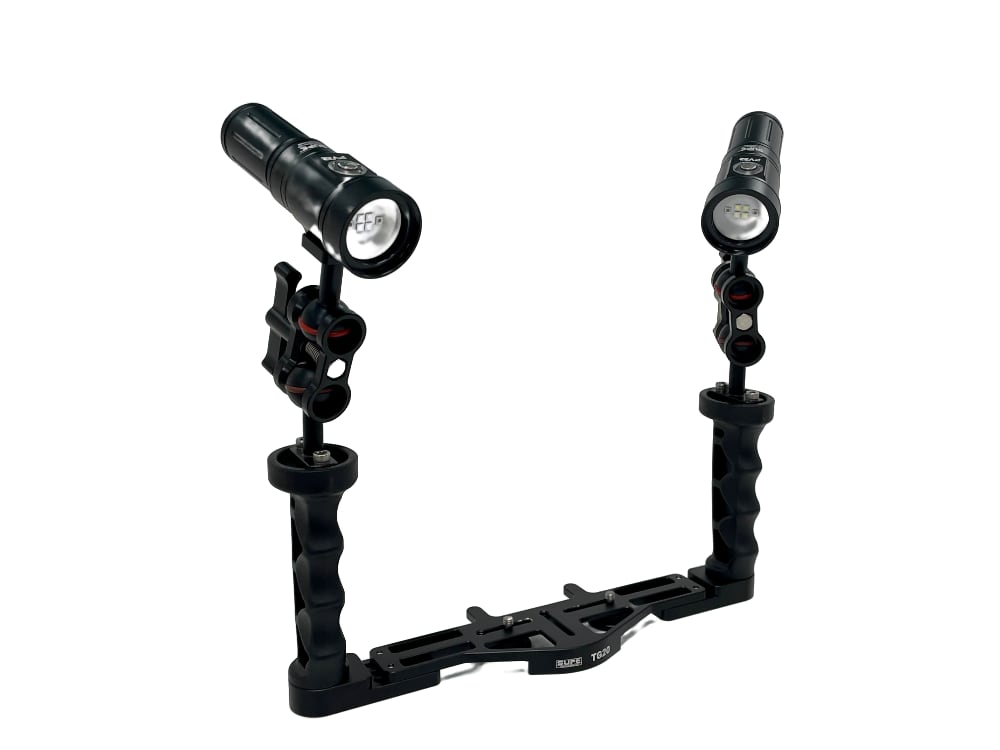 Video Light Package with tray and arms - 4000 lumens - Scubalamp PV22 x 2
Video Light Package with tray and arms - 4000 lumens - Scubalamp PV22 x 2 




